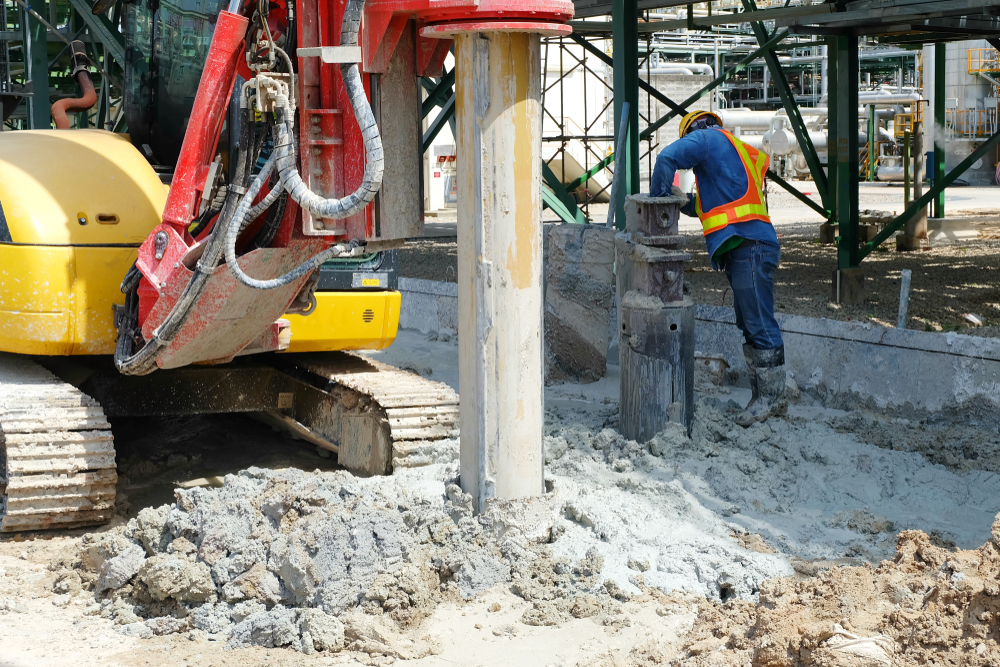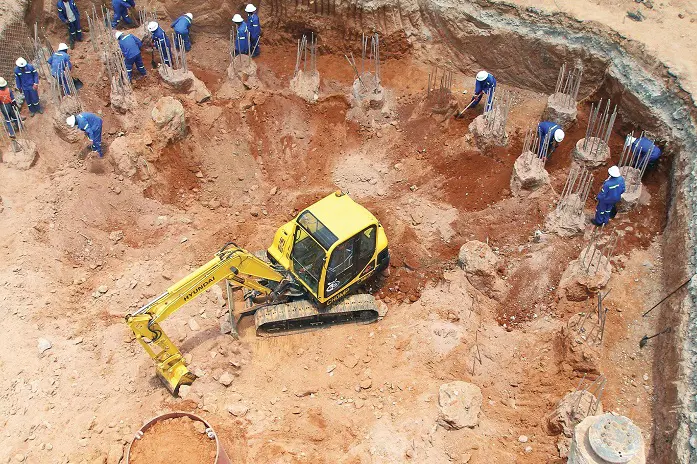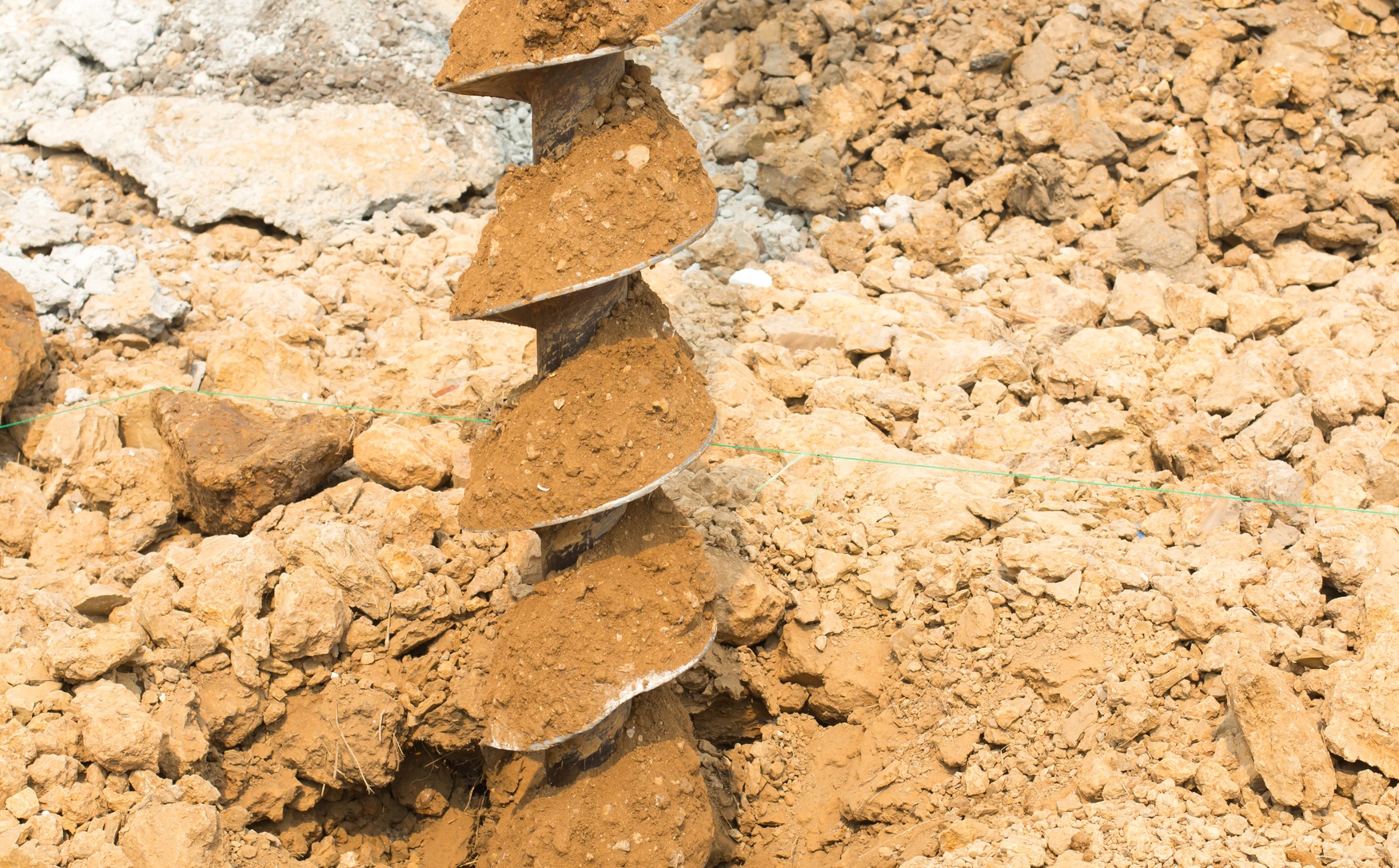Exploring the Duty of a Geotechnical Engineer Description and Obligations
Exploring the Duty of a Geotechnical Engineer Description and Obligations
Blog Article
The Value of Geotechnical Engineering in Attending To Ecological Difficulties and Enhancing Construction Safety
Geotechnical engineering serves as a keystone in the crossway of environmental stewardship and building and construction safety and security, giving important understandings into the behavior of dirt and rock under numerous problems. By applying calculated website investigations and tailored mitigation procedures, geotechnical engineers play an important function in securing both human lives and eco-friendly integrity.

Role of Geotechnical Design
Geotechnical engineering plays a critical function in the design and building and construction of framework by resolving the habits of dirt and rock materials under various conditions. This area of engineering is crucial for understanding the communication between frameworks and the ground, that includes figuring out the load-bearing ability of dirt, analyzing security, and forecasting possible negotiation or failure.
Geotechnical designers are in charge of performing website examinations, which involve tasting and screening soil and rock to collect data on their chemical and physical buildings. This information is important for making foundations, retaining walls, and other earth-retaining structures that make certain safety and durability. Moreover, geotechnical engineering educates the selection of suitable building and construction methods and materials, thereby minimizing risks linked with soil actions.
Additionally, the combination of geotechnical design concepts into urban planning and environmental monitoring is critical for resolving difficulties such as ground contamination and groundwater management. By recognizing geotechnical elements, designers can establish lasting remedies that enhance the resilience of infrastructure against all-natural threats, while likewise advertising environmental stewardship. Ultimately, the role of geotechnical design is important for accomplishing safe, sturdy, and environmentally aware building methods.
Dirt Disintegration Mitigation
Soil disintegration poses a considerable danger to both ecological stability and facilities honesty, impacting roughly 24 billion bunches of fertile dirt shed each year worldwide. This phenomenon is worsened by factors such as deforestation, urbanization, and poor farming practices. Geotechnical design plays a crucial role in establishing reliable dirt disintegration mitigation techniques that protect both the environment and construction tasks.
One strategy requires the application of disintegration control approaches such as vegetation growing, which supports dirt through origin systems. Furthermore, the construction of keeping wall surfaces and terraces can effectively decrease surface overflow and shield susceptible locations from erosion. Appropriate water drainage layout is also vital; it decreases water accumulation and directs excess runoff away from essential structures.
In addition, geotechnical engineers utilize dirt stabilization techniques, such as the application of geotextiles and naturally degradable floor coverings, to improve dirt cohesion and avoid destruction - geotechnical companies in south africa. Regular tracking and evaluation of erosion-prone websites enable prompt treatments, ensuring long-lasting sustainability. By incorporating these approaches, geotechnical engineering not just minimizes the effects of soil erosion but additionally contributes to the strength of facilities against ecological challenges, ultimately promoting a more secure and more sustainable built environment
Groundwater Protection Techniques
Groundwater acts as a vital resource for alcohol consumption water, agriculture, and commercial processes, making its protection vital for environmental sustainability and public health and wellness. Efficient groundwater defense techniques are essential in alleviating contamination risks and making certain the longevity of this resource.

Routine surveillance of groundwater high quality is also important, allowing very early discovery of contamination sources and helping with prompt remediation initiatives. Using innovative technologies, such as geophysical surveys and remote noticing, help in identifying potential threats to groundwater reserves.
Additionally, public education and stakeholder interaction are critical, cultivating community assistance for groundwater defense initiatives. geotechnical engineer description. By combining regulative procedures, technological improvements, and community involvement, we can produce a thorough structure that safeguards groundwater sources while promoting lasting development and construction methods
Landslide Threat Management
Landslides present considerable hazards to both human security and facilities, making effective risk administration approaches essential. Geotechnical design plays a vital function in recognizing, evaluating, and mitigating landslide risks. A detailed understanding of incline stability, soil technicians, and hydrology is important for creating reliable threat management plans.
The initial step in landslide danger management involves thorough website investigations, that include geological mapping and dirt testing. These examinations assist designers review the capacity for landslides by identifying essential variables such as slope angles, dirt composition, and water material. Making use of innovative innovations such as remote picking up and geophysical studies can boost the accuracy of these analyses.
When dangers are recognized, proper reduction procedures can be applied. These might include engineering services such as maintaining wall surfaces, water drainage systems, and slope stabilization strategies. Keeping track of systems must be established to discover signs of ground activity and changes in water levels, permitting for aggressive interventions.

Enhancing Building And Construction Security
Construction sites typically provide a myriad of risks that can jeopardize employee security and job stability. Geotechnical design plays an essential function in enhancing building and construction security by giving crucial insights into subsurface conditions. Through thorough soil and rock evaluation, geotechnical engineers can recognize possible dangers, such as soil instability, groundwater concerns, and seismic vulnerabilities, which might endanger the security of building and construction tasks.
Carrying out geotechnical options, such as correct foundation style and the use of maintaining structures, mitigates these dangers substantially. These remedies not only make sure the security of the frameworks being developed yet likewise create a more secure working atmosphere for building personnel. In addition, strenuous tracking and analysis of website problems throughout the building procedure are vital. Utilizing advanced technologies like ground-penetrating radar and inclinometer systems allows real-time data collection, enabling prompt interventions when dangers are identified.
Furthermore, fostering a society of safety and security through training and adherence to established safety procedures additionally enhances construction site safety. By integrating geotechnical expertise right into the planning and execution phases, building projects can achieve greater safety standards, eventually protecting employees and making certain successful task completion.
Final Thought
In conclusion, geotechnical engineering functions as an important self-control in advertising and taking on ecological difficulties building safety. Via efficient dirt erosion reduction, groundwater defense strategies, and landslide threat management, geotechnical engineers add to the advancement of durable infrastructure. The assimilation of these practices cultivates a much safer building and construction atmosphere and enhances the sustainability of civil engineering tasks. Eventually, the knowledge of geotechnical designers is crucial in protecting both natural deposits and human lives versus potential special info dangers.
Geotechnical engineering offers as a foundation in the junction of environmental stewardship and building and construction security, giving critical understandings right into the actions of dirt and rock under various problems. Geotechnical design notifies the selection of ideal building and construction methods and materials, thus reducing risks linked with dirt actions.
Geotechnical design plays a critical function in developing efficient soil erosion reduction strategies that secure both the atmosphere and building tasks.
Moreover, geotechnical engineers use soil stablizing methods, such as the application of geotextiles and eco-friendly floor coverings, to boost soil cohesion and protect against deterioration. Through thorough dirt and rock evaluation, geotechnical engineers can identify potential dangers, such as soil instability, groundwater concerns, and seismic susceptabilities, which might endanger the security of building and construction activities.
Report this page